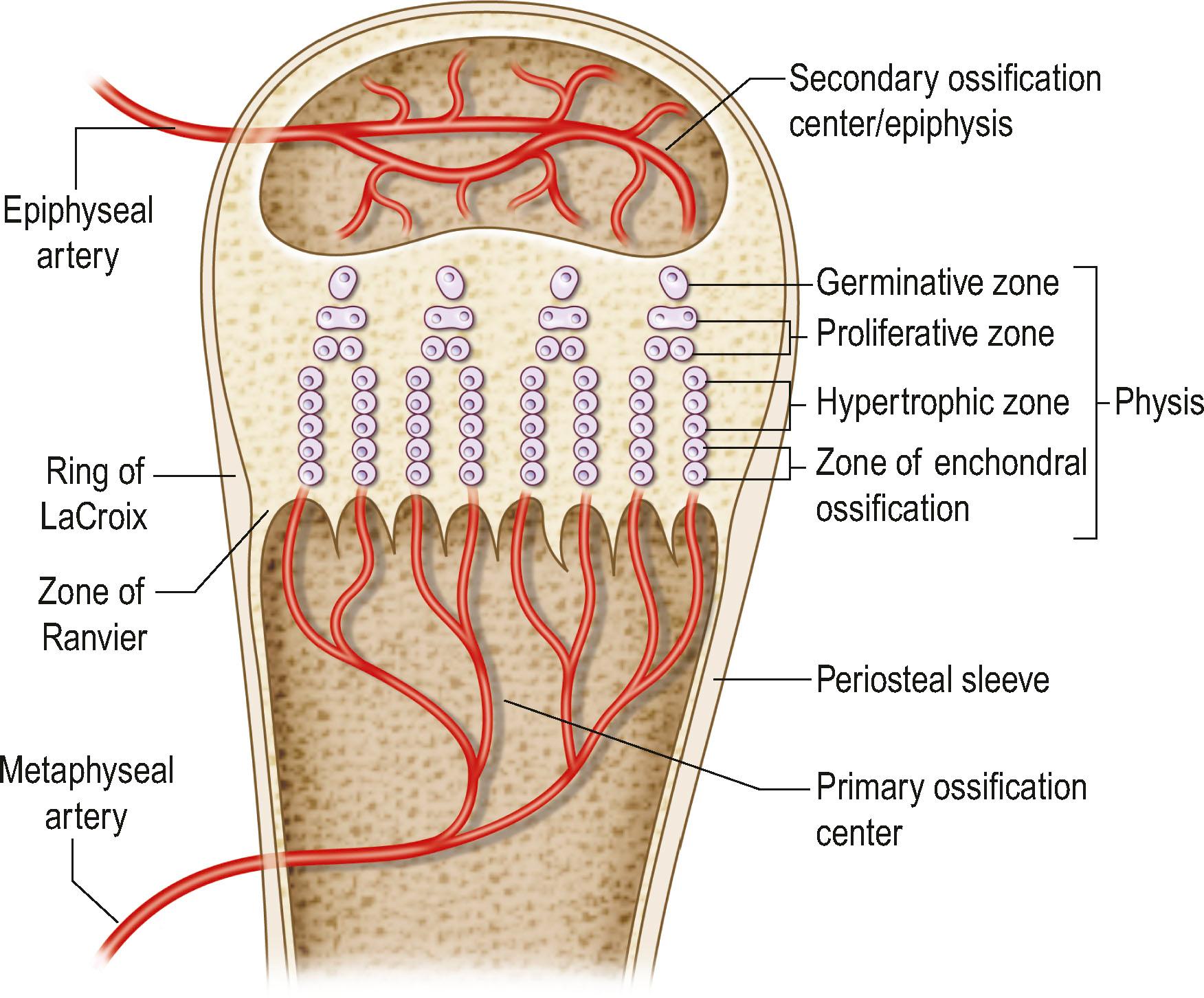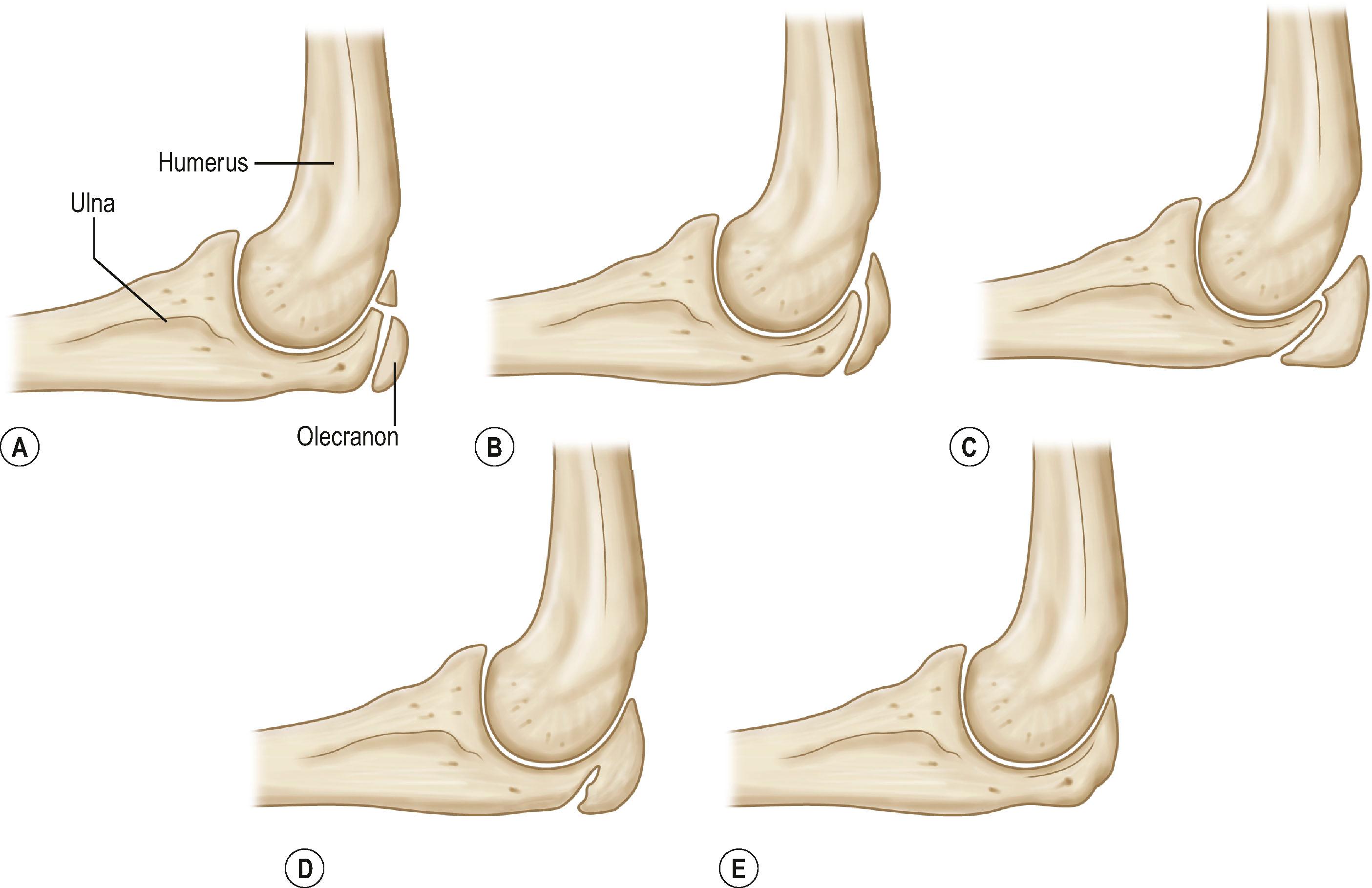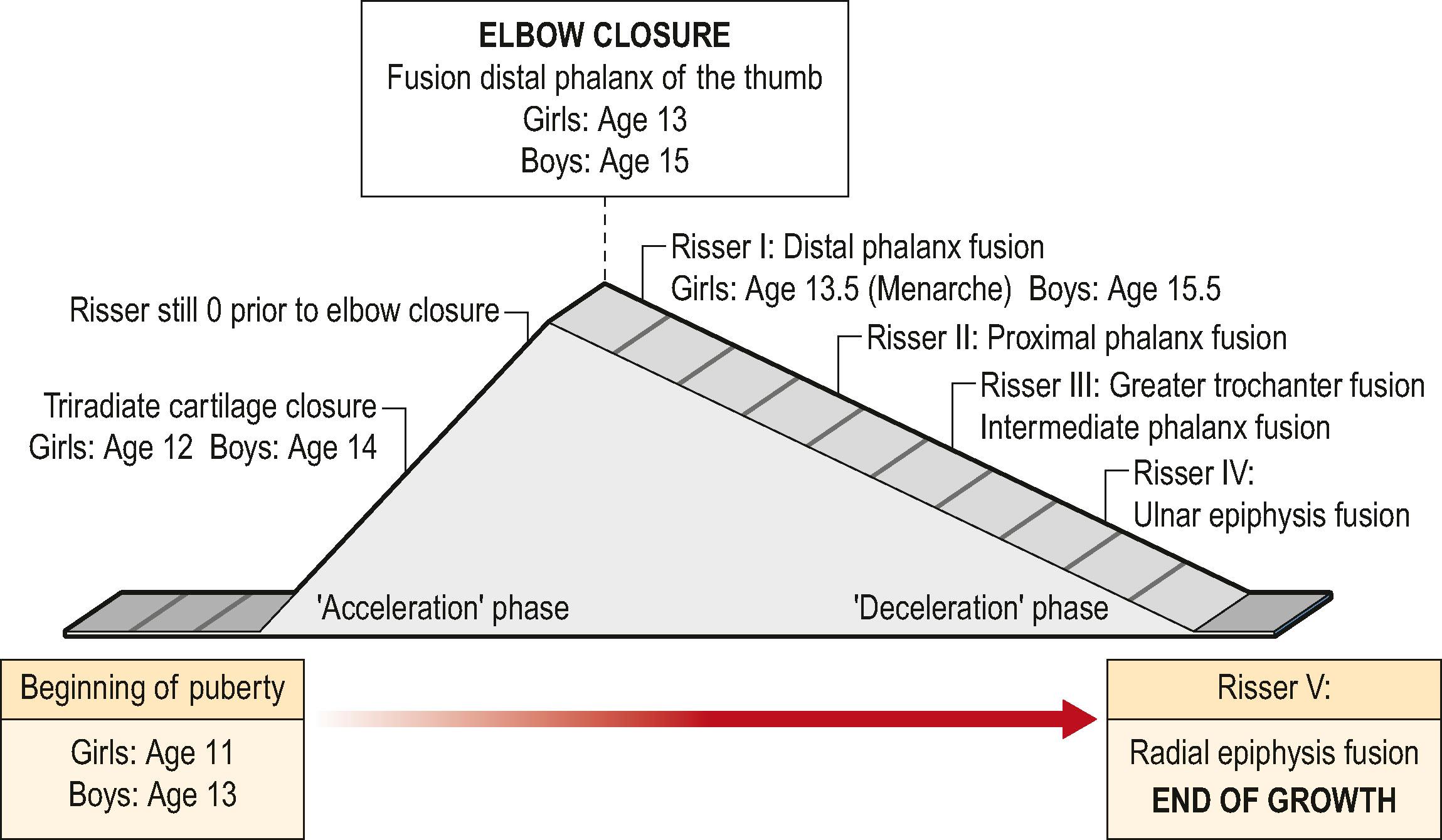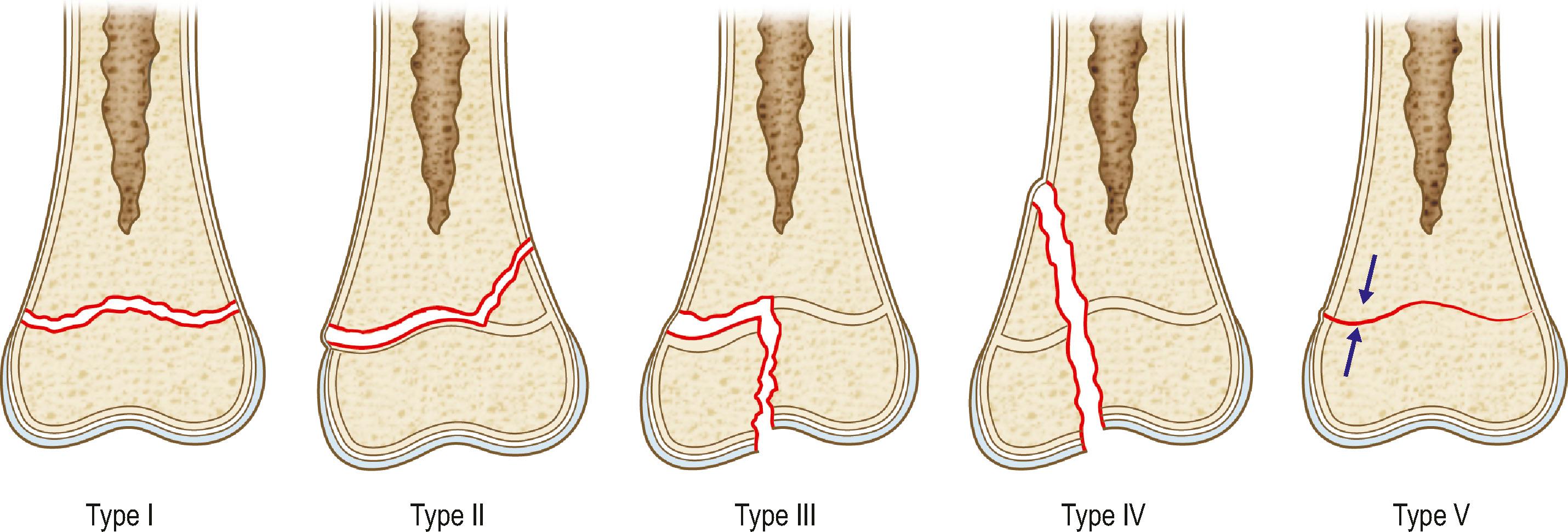Physical Address
304 North Cardinal St.
Dorchester Center, MA 02124
Skeletal growth is possible because of the presence of an active physis.
The physis is a temporary anatomical structure physiologically regulated by several factors. It can be hindered by congenital conditions (chondrodysplasias), direct damage, or interruption of its blood supply.
Regardless of its etiology, when the physis and or the epiphysis are damaged in a skeletally immature individual, three main issues must be addressed: restoration of longitudinal growth, restoration of joint congruency and function, and replacement of the osseous defect.
Therapeutic options include completion of epiphyseal arrest, resection of the physeal bar, and epiphyseal distraction.
Where there is involvement of the whole epiphysis, autologous epiphyseal transfer may achieve the dual goals of restoring joint function and growth potential. The longer the period of time between the epiphyseal insult and the expected end of growth, the stronger the indication for surgical treatment.
Access video and video lecture content for this chapter online at Elsevier eBooks+ ![]()
![]()
The growth plate is a temporary anatomical entity, which allows axial growth in long bones. Once skeletal maturity is approached, the function of the growth plate gradually decreases and eventually stops.
Trauma, infection, irradiation, thermal injury, tumors, and congenital disorders may affect the growth plate and interfere with the growth process.
Any damage to the growth plate in a skeletally immature individual leads to growth disturbance with deformity and/or length discrepancy.
Goals of the surgical treatment should be restoration of the physiological growth, prevention of angular deformities, and correction of established deviation of bones and joints ( ![]() ).
).
The physis (also known as growth plate, epiphyseal plate, epiphyseal growth plate, epiphyseal cartilage) is a highly specialized and organized cartilaginous structure derived from the mesoderm. It develops in the bone bud, secondary to the primary ossification centers (metaphysis) and is responsible for longitudinal and circumferential bone growth. The physis must be distinguished from the epiphysis, or secondary ossification center ( Fig. 39.1 ).

The physis consists of proliferating chondrocytes surrounded by synthesized extracellular matrix. The extracellular matrix is composed of water, collagen fibrils (mainly types II, IX, X, and XI) and proteoglycans (aggrecan, decorin, annexin II, V, and VI) arranged to form a sort of sponge with very small pores. This arrangement confers peculiar mechanical properties that permit the physis to be “hard” when an axial load is applied rapidly (a jumping child) or “soft” when deformed slowly (when chondrocytes secrete new extracellular matrix).
The physis is traditionally divided into horizontal zones of chondrocytes at different stages of maturation (see Fig. 39.1 ). The resting zone (reserve zone or germinal matrix), immediately adjacent to the epiphysis, contains small, uniform, irregularly scattered chondrocytes, also referred to as stem cells, with low rates of proliferation but rich in storage materials (lipids and cytoplasmic vacuoles) for later growth. The resting zone is responsible for protein synthesis and for maintaining a germinal structure. Injury to this layer results in cessation of growth.
When chondrocytes enter into the proliferative zone they undergo rapid duplication, increase the synthesis of collagen, in particular types II and XI, and become flat and well organized into longitudinal columns. Mitotic activity is present only at the base of these columns. This layer is responsible for longitudinal growth of the bone via active cell division. These first two zones have an abundant extracellular matrix that confers a great deal of mechanical strength, in particular in response to shear forces.
Further morphological changes – maturation, degeneration, and provisional calcification – take place in the transformation (or hypertrophic) zone, divided into upper and lower hypertrophic zones.
The presence of provisional calcification confers shear resistance to the lower hypertrophic zone. In contrast, the upper hypertrophic zone containing scant extracellular matrix is the weakest portion of the physis and it is here that most injury or alteration to the physis occurs.
In continuity with the metaphysis is the zone of endochondral calcification where the mineralization process of the matrix becomes more intensive.
The periphysis is a fibrochondroosseous structure that surrounds the physis of tubular bones and plays an important role in skeletal development (see Fig. 39.1 ): (1) it allows gradual circumferential growth of the physis; (2) it continues to maintain its transverse diameter ; and (3) it is critical to the overall stability of the growth plate and to support for the physis bone–cartilage junction.
The part of the periphysis adjacent to the epiphysis is a wedge-shaped group of germinal cells known as the zone of Ranvier, while the part adjacent to the metaphysis is known as the ring of LaCroix. Histologically, the Ranvier and LaCroix zones are a single structure (see Fig. 39.1 ).
Chondrocyte proliferation and differentiation in the physis, and therefore longitudinal skeletal growth, are regulated at both a systemic and local level. A number of endocrine, paracrine, and autocrine factors and their respective receptors are involved in this process. Amongst these, the parathyroid hormone-related protein (PTHrP) and the Indian hedgehog (Ihh) play a prominent role in skeletal maturation. There is also mechanical control of growth, which is important in pediatric orthopedic surgery because it is the basis of the widely used epiphysiodesis and epiphyseal distraction procedures.
The epiphyseal and physeal cartilage vascular anatomy in newborn and early postnatal life is integral to long-bone development and differs from later postnatal periods. In late fetal and early postnatal life, epiphyseal cartilage canals (or transphyseal vessels) are seen passing through the physeal cartilage and communicating with the metaphyseal marrow. Such vessels play an active role in forming the secondary ossification centers but their primary earlier function is to provide nutrition by diffusion to epiphyseal chondrocytes.
The transphyseal vessels are constantly obliterated several months after birth. Once the obliteration has occurred, the physeal cartilage becomes an avascular structure supplied by the epiphyseal vessels by diffusion, and by the metaphyseal vessels invading the lowermost regions of the hypertrophic zone.
The main vascular supply to the germinal zone is from the epiphyseal vessels. Two types of epiphyseal vascularization are described. Type A epiphyses are almost entirely covered by articular cartilage, and the epiphyseal vessels enter the epiphysis after traversing the perichondrium. With this anatomical configuration, the blood supply to the epiphysis, and consequently to the germinal zone, is susceptible to damage if the epiphysis is separated from metaphysis. Type B epiphyses are only partially covered by articular cartilage. Their blood supply enters from the epiphyseal side and is protected from vascular injury during separation. The proximal femur and proximal radius are the only two examples of type A epiphyses.
It is generally assumed that long bone physes close at 14 years of skeletal age in females and at 16 years in males while the axial skeleton completes its development later. In 50% of normal children and adolescents, skeletal age does not differ from chronological age. Prediction of limb length discrepancy and final standing height, as well as decisions regarding when to perform an epiphysiodesis, are first subjected to determination of skeletal age.
A complication unique to physeal injuries is growth disturbance. Once damage to the physis has occurred, the predicted amount of growth remaining from that specific physis must be determined to plan the treatment. This can be accomplished by determining the skeletal age of the patient and then using information on physeal growth rates and patterns assembled by Green and Anderson.
Treatment decisions are often made during puberty. Puberty is the period of time in the growing individual characterized by a significant increase in growth rate. In girls, puberty starts at 11 years and ends at 13 years of skeletal age; in boys, it starts and ends 2 years later (13 years and 15 years of skeletal age). Peak height growth and Tanner stage 2 signal the beginning of puberty. The 2 years of pubertal growth spurt are known as the acceleration phase followed by a deceleration phase that continues until skeletal maturity.
The radiographic markers currently used to assess skeletal age are all based on the appearance of ossification centers in specific skeletal segments at specific times. Several age assessment methods are based on the use of anteroposterior radiographs of the left hand and wrist. Other methods use left elbow radiographs. The axial skeleton can also be used to determine the skeletal age: Risser sign is based on the appearance of the left iliac apophysis of the pelvis. However, other radiographs can be used to assess skeletal age.
Different assessment methods become helpful at different ages. The Greulich and Pyle atlas is probably the most common and widely used method to assess skeletal age. This technique, however, has some limitations, especially during puberty because it does not make it possible to assess skeletal age at 6-month intervals during the 2 years of peak growth rate. On the other hand, during the pubertal acceleration phase, the elbow, at the level of the distal epiphysis ossification centers and the olecranon apophysis, undergoes peculiar and identifiable morphological changes every 6 months ( Figs. 39.2 & 39.3 ). Elbow ossification centers always appear in a determined sequence (the mnemonic is CRITOE: capitellum, radial head, internal (medial) epicondyle, trochlea, olecranon, external (lateral) epicondyle). The ages of appearance, as a general guide, are 1–3–5–7–9–11 years.


During the acceleration phase, the skeletal age is best assessed with X-rays of the left hand and left elbow. In the deceleration phase, the growth rate decreases significantly. The remaining growth in both boys and girls is around 6 cm, of which 4.5 cm belong to the trunk and skull. During this phase, the most useful tools for skeletal age assessment are again the left hand and the Risser stage.
Regardless of the assessment method used, skeletal age alone is not enough, and it should be related to other clinical and radiological findings such as standing and sitting height, Tanner stage, and annual growth rate.
A complication unique to physeal injuries is growth disturbance. Trauma is the most common cause of physeal injury and growth disturbance, but physeal growth arrest may as well occur after infection, tumor, irradiation, thermal injury, laser beam exposure, and sequelae of Blount's disease (growth disorder with bowing of the tibia).
Physeal injuries represent 15–30% of all fractures in children and frequently involve the upper extremities. The incidence varies with age, with a peak in adolescence. The upper hypertrophic zone, just above the area of provisional calcification, is the weakest layer of the physis and where most injuries to the physis occur. This observation implies that, after most injuries, the germinal layer of the physis remains intact and attached to the epiphysis. Consequent normal growth should resume unless insult to the blood supply of the germinal layer or development of a “bony bridge” across the injured physis occurs.
Several classification systems for physeal injuries have been described. The Salter and Harris classification ( Fig. 39.4 ) is by far the most widely used system. This classification helps to distinguish different types of fractures and provides prognostic information as well. In Salter–Harris type I (see Fig. 39.4 ), the injury is a separation of the epiphysis from the metaphysis. It occurs entirely through the physis and therefore the surrounding bone is not involved. It is rare and tends to be seen in infants or pathologic fractures, such those secondary to rickets or scurvy. Because the germinal layer remains with the epiphysis, growth is not hindered unless blood supply is interrupted (traumatic separation of the proximal femoral epiphysis). Often, X-rays of a child with a type I Salter–Harris fracture will appear normal. Healing of type I fractures tends to be rapid, and complications are rare.

In Salter–Harris type II injury (see Fig. 39.4 ), the fracture extends along the hypertrophic zone of the physis but then it continues and exits through the metaphysis. This is the most common type of growth plate fracture, and tends to occur in older children. The epiphyseal fragment contains the entire germinal layer as well as a metaphyseal fragment, known as Thurston Holland's sign. The periosteum on the side of the metaphyseal fragment is usually intact and provides stability after reduction. Growth disturbance is uncommon because the germinal layer remains intact.
In Salter–Harris type III injury (see Fig. 39.4 ), the fracture starts through the hypertrophic zone and exits through the epiphysis. These injuries also tend to affect older children. By definition, type III fractures cross the germinal layer and are usually intra-articular. Consequently, they raise concerns about growth and, when displaced, they require anatomic, and often open, reduction.
In Salter–Harris type IV injury (see Fig. 39.4 ), the fracture starts from the metaphysis and then extends through the physis and into the epiphysis. By definition, these fractures disturb the germinal layer and are usually intra-articular. Consequently, these injuries may impair normal growth and affect articular congruency. In type IV injuries, an anatomic reduction is mandatory in order to prevent osseous bridging across the physis and to restore the articular surface.
A Salter–Harris type V injury (see Fig. 39.4 ) occurs when the physis is crushed from a pure compression force. It is so rare that some authors question whether such an injury exists. For those authors who have reported on this injury, it carries the most concerning prognosis as the growth disturbance is almost a rule. It often requires later surgical treatment to restore limb length and alignment.
Despite being widely used, the Salter–Harris classification excludes a few physeal injuries: the Rang's type VI epiphyseal injury, which represents an injury to the perichondral ring, and two additional injuries described in the Peterson classification system ( Fig. 39.5 ), which is very similar to the Salter–Harris scheme. The Peterson type I fracture is a transverse fracture of the metaphysis that extends longitudinally into the physis. Clinically, this type of fracture is commonly seen in the distal radius. The Peterson VI fracture is an open injury associated with loss of the physis.

Growth plate injuries that are less severe and occur closer to the time of closure of the growth plate, carry the best prognosis. More severe injuries occurring in younger patients require observation and possibly treatment to prevent problems. The principles of treatment of physeal fractures are the same as those involved in the treatment of all fractures, with a few important considerations.
The goal in the treatment of physeal injuries is to obtain and maintain an acceptable reduction while avoiding any further damage to the germinal layer of the physis during reduction. Thus the most important goal, and the most subjective one, is to establish the limits of acceptable reduction.
The age of the patient, the location and displacement of the fracture, and the time elapsed since the injury must all be taken into consideration when assessing a non-anatomic reduction. Although animal studies have not shown that delay in reduction produces a growth disturbance, the recommendation is to accept any displacement in type I and II injuries after 7–10 days and rather plan an osteotomy later. As a general rule, the remodeling potential is inversely proportionate to the age of the patient and is also related to the location and type of injury. Consequently, a greater deformity can be accepted in younger children.
Because type III and IV injuries are by definition intra-articular, the focus must be on achieving an anatomic reduction regardless of the age of the patient and the time that has elapsed since the injury. Once the physeal fracture has been reduced, the reduction can be maintained with cast, pins, internal fixation, or combinations of these three.
Most of the common primary malignant bone tumors occur in patients aged under 30 years. Typically, osteosarcoma and Ewing sarcoma are found in adolescents and young adults, but they may also be diagnosed during infancy. The current approach to systemic therapy includes preoperative (neoadjuvant) chemotherapy and postoperative (adjuvant) chemotherapy for both osteosarcoma and Ewing sarcoma. Radiotherapy is indicated only in Ewing sarcoma and it may be the only local treatment in cases of tumor in unfavorable locations, such as spine and pelvis, and in all cases where radical surgery is unlikely to be successful. Postoperative radiotherapy is indicated in all cases of intralesional resections with the aim of reducing the risk of local recurrence.
With advances in bone reconstruction, the role of surgery has become predominant in the treatment of primary bone tumors, and the percentage of limb salvage versus amputation has significantly increased. In the upper limb, bone sarcomas are more frequently located in the distal radius and proximal humerus. Although the tumor is usually initially located at the metaphyseal level, the growth plate and the physis are always to be considered as a possible target of sarcoma invasion. From a functional standpoint, it is critical to know whether the surgical resection may spare the epiphysis or not.
In the past, the growth plate was thought to be a biologic barrier to bone tumor invasion ; unfortunately this theory has not proven to be valid ( Fig. 39.6 ). The current view is that invasion of the physis must always be suspected when the tumor is located in the proximity of the growth plate and all patients should be investigated with magnetic resonance imaging (MRI). In the event of epiphyseal involvement, the oncological resection must include the epiphysis and the only possible reconstructive option for such a defect in the pediatric age group is autologous epiphyseal transplant.

Become a Clinical Tree membership for Full access and enjoy Unlimited articles
If you are a member. Log in here